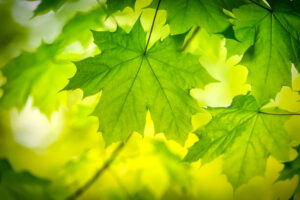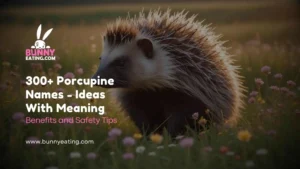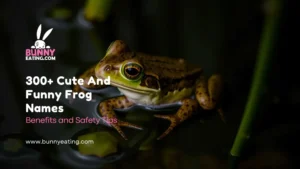Your rabbit’s health and well-being need to find safe and nutritious foods. Certain foods, like maple leaves, may seem innocuous, but they can still be hazardous for your pet. This post will discuss the possible risks of giving rabbits maple leaves and offer alternatives for a healthy diet. We’ll go over all that you need to know to keep your rabbit happy and healthy, from knowing the risks to learning how to keep an eye on its health. Now let’s get started and investigate the realm of rabbit nutrition as a team. Can Rabbits Eat Maple Leaves?
Safe Alternative to Rabbit Eating Maple Leaves
There are plenty of risk-free options you can think about if feeding your rabbit maple leaves makes you feel uneasy. Choose leafy greens such as parsley, chives, kale, and romaine lettuce. Given that these greens are high in fibre and low in calories, rabbits can safely eat them. You can also provide a range of veggies, like broccoli, bell peppers, and celery, but be careful when introducing them gradually to avoid diarrhoea.
Risks of Feeding Maple Leaves
While maple leaves may seem harmless, they can pose risks to your rabbit’s health if ingested in large quantities. Maple leaves contain compounds such as tannins and lectins, which can be toxic to rabbits in excessive amounts. Consuming large quantities of maple leaves can lead to digestive issues such as diarrhoea, bloating, and gastrointestinal discomfort. In severe cases, it can even result in toxicity and potential organ damage.

Effects of Maple Leaves on Rabbits
When rabbits consume maple leaves, they may experience various effects depending on the quantity ingested and their tolerance levels. Mild effects may include gastrointestinal upset, such as soft stools or bloating. In more severe cases, rabbits may exhibit symptoms of toxicity, such as lethargy, loss of appetite, and dehydration. It’s essential to monitor your rabbits closely if they’ve consumed maple leaves and seek veterinary attention if any concerning symptoms arise.
Are Maple Leaves Good for Rabbits?
Maple leaves are not considered a suitable food option for rabbits due to their potential toxicity and adverse effects on digestive health. While rabbits may nibble on small amounts of maple leaves without immediate harm, it’s best to avoid offering them as a regular part of their diet. Instead, focus on providing a balanced diet consisting of safe leafy greens, vegetables, hay, and pellets to meet your rabbit’s nutritional needs.
Nutritional Value of Maple Leaves for Rabbits
Maple leaves are not a significant source of nutrition for rabbits and should not be relied upon as a dietary staple. While they contain some vitamins and minerals, such as vitamin C and calcium, these nutrients are found in higher concentrations in other rabbit-safe foods. Additionally, the potential risks associated with maple leaves outweigh any minimal nutritional benefits they may offer to rabbits.
How Are Maple Leaves Made?
Maple leaves are produced by maple trees through a process called photosynthesis. During photosynthesis, maple trees use sunlight, water, and carbon dioxide to produce glucose, which serves as their primary source of energy. The leaves play a crucial role in this process by capturing sunlight and converting it into chemical energy through chlorophyll, the pigment responsible for their green colour. As the seasons change, maple leaves undergo senescence, or ageing, and eventually fall from the tree.
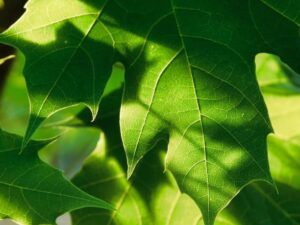
What Types of Maple Leaves Are Safe for Rabbits?
While all types of maple leaves contain potentially harmful compounds, some species may be more toxic than others. It’s best to avoid feeding any variety of maple leaves to your rabbit to prevent the risk of toxicity and digestive issues. Instead, focus on offering safe leafy greens and vegetables that are known to be suitable for rabbit consumption.
Do Wild Rabbits Eat Maple Leaves?
Wild rabbits may occasionally nibble on maple leaves if other food sources are scarce, but they typically prefer to forage for grasses, herbs, and other vegetation. However, just because wild rabbits may consume maple leaves does not mean it’s safe or advisable for domestic rabbits to do so. Wild rabbits have evolved to tolerate a wider range of plant materials than their domestic counterparts, who may be more susceptible to adverse effects.
Why Are Maple Leaves Harmful to Rabbits?
Maple leaves contain compounds such as tannins and lectins, which can be harmful to rabbits if ingested in large quantities. These compounds can disrupt the digestive process, leading to gastrointestinal upset and potentially more severe health issues. Additionally, some species of maple trees produce sap that contains toxins, further increasing the risk of toxicity for rabbits.
Store-bought maple Leaves and Rabbits
While store-bought maple leaves may be free of pesticides and other contaminants, they still pose the same risks to rabbits as leaves gathered from the wild. It’s best to avoid offering maple leaves of any kind to your rabbit and instead focus on providing a varied diet consisting of safe leafy greens, vegetables, hay, and pellets.
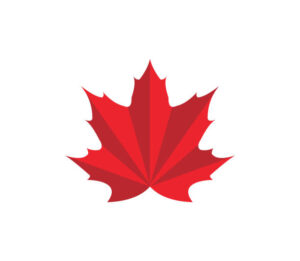
How Often Can My Rabbit Eat Maple Leaves?
It’s not recommended to feed maple leaves to your rabbit at all due to the potential risks involved. Instead, focus on offering a balanced diet that includes safe leafy greens, vegetables, hay, and pellets. These foods will provide your rabbit with the nutrients they need without risking their health.
How Many Maple Leaves Are There?
There are numerous species of maple trees, each producing a variety of leaves. While some species may be more toxic than others, it’s best to avoid feeding any type of maple leaves to your rabbit to prevent potential harm.
How Healthy Are Maple Leaves?
Maple leaves are not considered a healthy or suitable food option for rabbits due to their potential toxicity and adverse effects on digestive health. While they may contain some vitamins and minerals, these nutrients can be obtained from safer food sources without the risk of harm.
How Nutritious Are Maple Leaves?
Maple leaves are not particularly nutritious for rabbits and should not be relied upon as a source of essential nutrients. While they may contain small amounts of vitamins and minerals, these are outweighed by the potential risks of toxicity and digestive upset associated with their consumption.
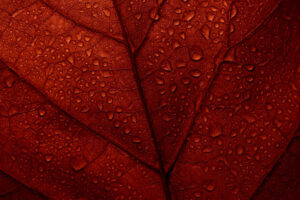
Preparing Maple Leaves for Rabbits
It’s best to avoid preparing maple leaves for your rabbit altogether, as they are not a safe or suitable food option. Instead, focus on offering a balanced diet consisting of safe leafy greens, vegetables, hay, and pellets to meet your rabbit’s nutritional needs.
What Should I Combine Maple Leaves With for My Rabbit?
Since maple leaves are not recommended for rabbit consumption, there’s no need to combine them with other foods. Instead, focus on providing a varied diet that includes safe leafy greens, vegetables, hay, and pellets to ensure your rabbit receives the nutrients they need without risking their health.
What If My Rabbit Eats a Large Amount of Maple Leaves?
If your rabbit consumes a large amount of maple leaves, monitor them closely for any signs of gastrointestinal upset or toxicity. Contact your veterinarian immediately if you notice any concerning symptoms, such as diarrhoea, lethargy, or loss of appetite. Prompt veterinary care may be necessary to address any potential health issues.
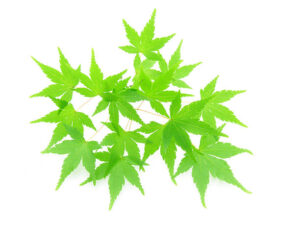
How Much Maple Leaves Can My Rabbit Eat?
Rabbits shouldn’t eat any amount of maple leaves due to the potential risks involved. Instead, focus on offering a balanced diet that includes safe leafy greens, vegetables, hay, and pellets to meet your rabbit’s nutritional needs without risking their health.
When Shouldn’t You Feed Maple Leaves to Your Rabbit?
You shouldn’t feed maple leaves to your rabbit at any time due to the potential risks involved. Even small amounts of maple leaves can cause digestive upset and toxicity in rabbits, so it’s best to avoid offering them altogether.
What If My Rabbit Accidentally Eats a Lot of Maple Leaves?
If your rabbit accidentally consumes a lot of maple leaves, monitor them closely for any signs of gastrointestinal upset or toxicity. Contact your veterinarian immediately if you notice any concerning symptoms, as prompt veterinary care may be necessary to address any potential health issues.
Monitoring Your Rabbit’s Health
Regularly monitor your rabbit’s health by observing their behaviour, appetite, and bathroom habits. If you notice any changes, such as decreased activity, loss of appetite, or abnormal stool consistency, it could indicate a health issue that requires veterinary attention. Keep an eye on your rabbit’s weight and overall condition to ensure they remain healthy and happy.
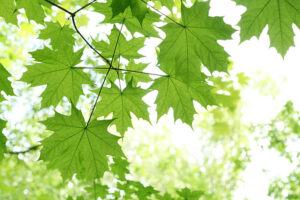
What Actions Should I Take If My Rabbit Consumes Maple Leaves?
If your rabbit consumes maple leaves, monitor them closely for any signs of gastrointestinal upset or toxicity. Contact your veterinarian immediately if you notice any concerning symptoms, such as diarrhoea, lethargy, or abdominal discomfort. Your vet can guide how to manage your rabbit’s symptoms and prevent any further complications.
What Else Can I Feed My Rabbit?
In addition to safe leafy greens and vegetables, rabbits can eat a variety of other foods as part of a balanced diet. Offer high-quality hay, such as timothy or orchard grass, as the foundation of your rabbit’s diet. You can also provide rabbit pellets formulated specifically for their nutritional needs. Treats like fresh fruits (in moderation) and occasional herbs can be given as well, but be cautious not to overfeed these items.
How to Create a Rabbit-Friendly Garden?
Create a rabbit-friendly garden by planting a variety of rabbit-safe plants and herbs. Avoid toxic plants like foxglove, daffodils, and lilies, and opt for rabbit-friendly options such as parsley, basil, and dandelions. Provide ample space for your rabbit to explore safely, and consider installing barriers or fencing to protect your garden from unwanted nibbling. Ensure your garden is free of pesticides and other chemicals that could harm your rabbit.
Rabbit Treats Made at Home
You can make homemade treats for your rabbit using safe ingredients like oats, hay, and fresh herbs. Try making hay-based treats, such as hay cubes or balls, by mixing hay with a small amount of water and forming it into shapes. You can also create herbal treats by drying fresh herbs like parsley, cilantro, or basil and offering them as occasional snacks. Just be sure to avoid adding any sugars, salts, or other ingredients that could be harmful to your rabbit.

